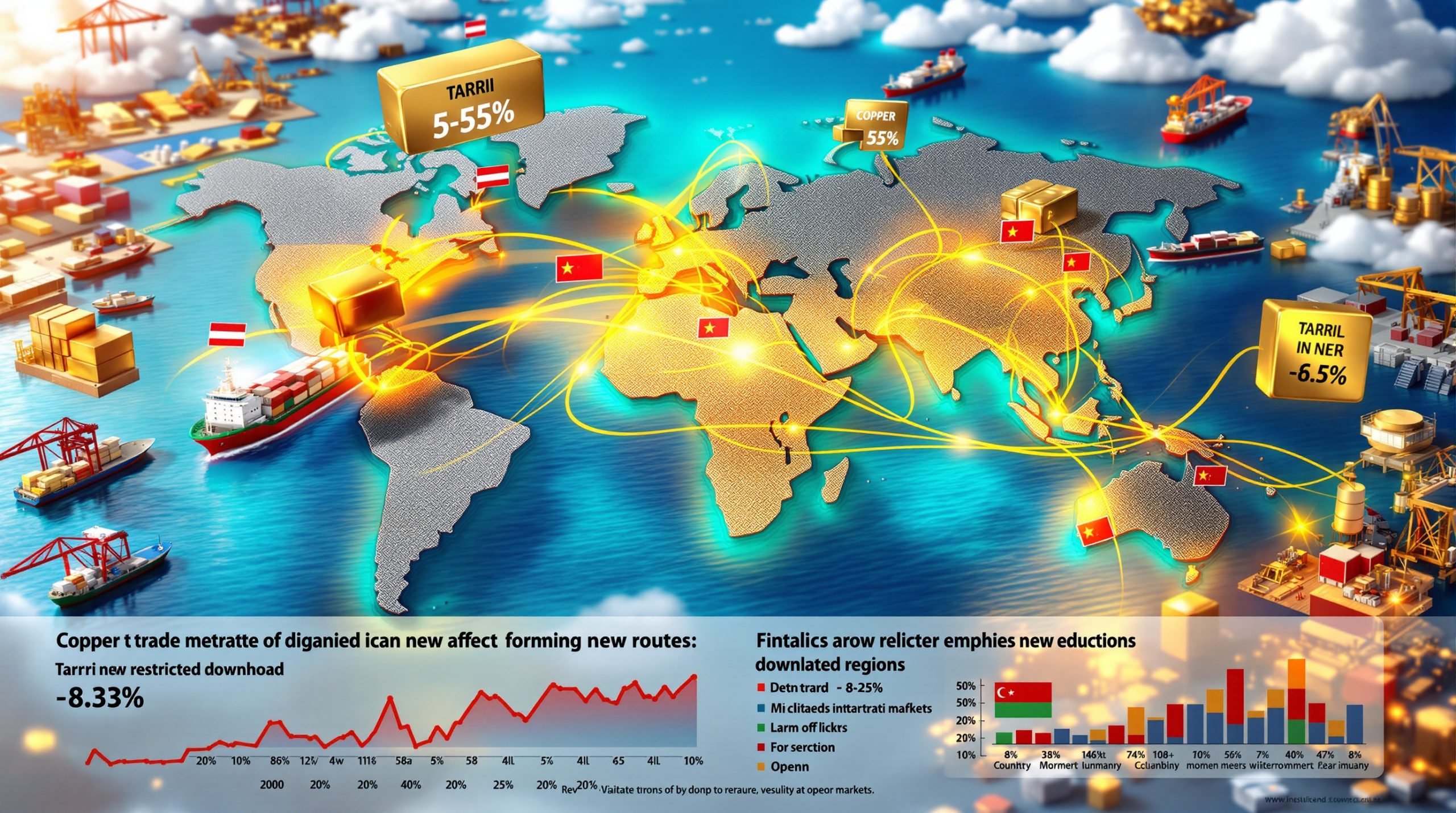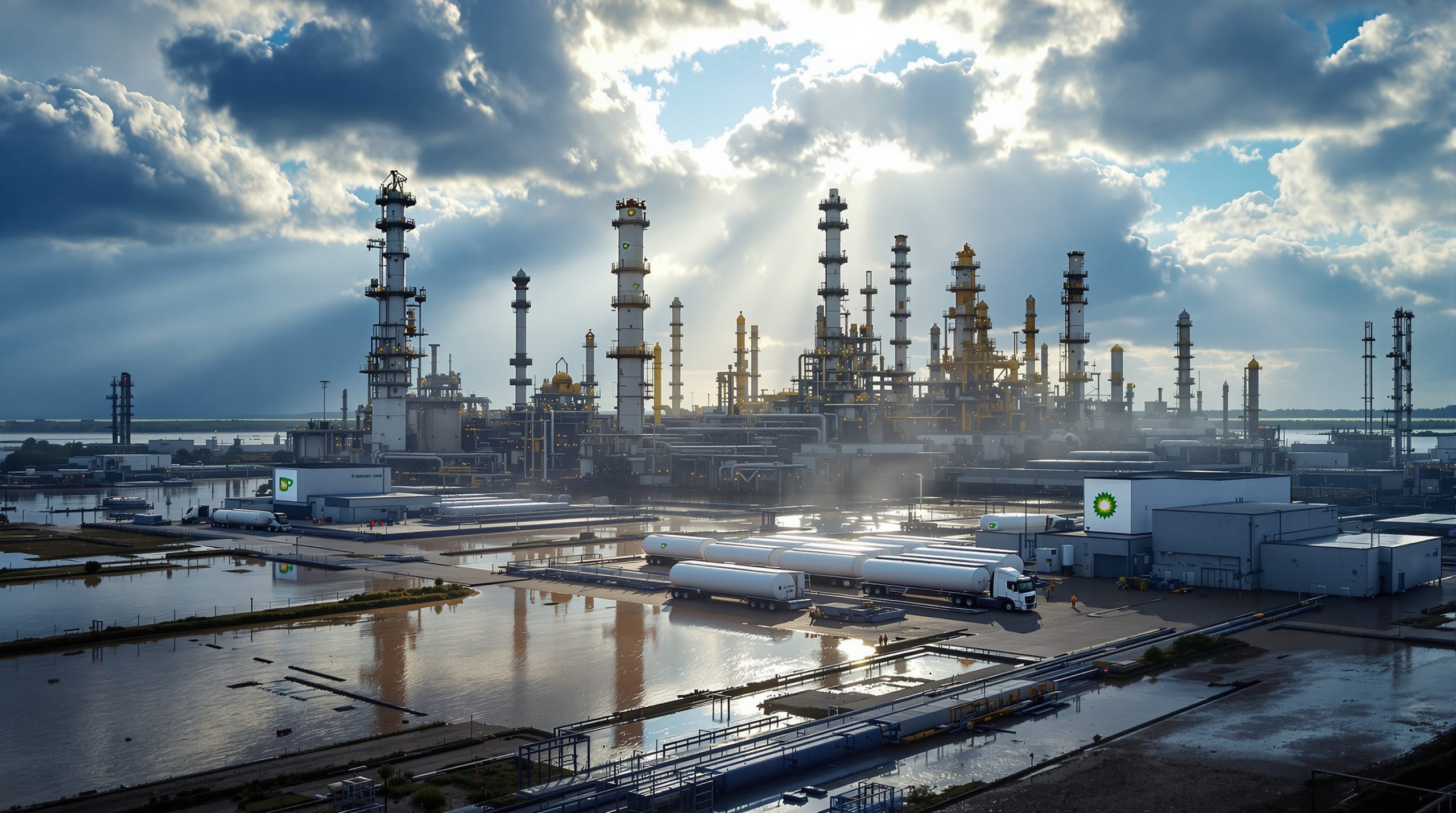China's Fertiliser Export Boom: Understanding the 600% Surge in Urea Shipments
China's urea exports have experienced an unprecedented surge, transforming global fertilizer markets and agricultural supply chains. This dramatic shift marks a significant policy change for the world's largest fertilizer producer, with far-reaching implications for global food security and agricultural productivity.
What's Driving China's Massive Fertiliser Export Increase?
The recent explosion in China's fertilizer exports represents one of the most significant shifts in global agricultural input markets of 2025. Understanding the factors behind this china fertiliser export surge provides critical insights for agricultural producers, commodity traders, and food security analysts worldwide.
The Remarkable 600% Export Growth in Numbers
China exported an astounding 567,184 tonnes of urea in July 2025, representing a 614% year-on-year increase compared to July 2024. This dramatic growth becomes even more remarkable when compared to the previous month's figures – a 7.6-fold rise from June 2025's 66,241 tonnes.
This export surge follows a period of extremely limited international shipments. During the January-May 2025 period, China's monthly urea exports averaged approximately 2,200 tonnes – less than 0.4% of July's volume. The expansion wasn't just in quantity but also in market reach, with export destinations increasing from 13 countries/regions in June to 31 in July 2025.
The scale of this increase represents not just a statistical anomaly but a fundamental shift in China's approach to agricultural commodity exports.
Policy Shift: From Restriction to Controlled Export
China's fertilizer export policy has undergone a strategic evolution rather than an abrupt change. The country implemented strict export restrictions in 2024 primarily to control domestic prices and ensure food security amid global supply chain disruptions. These restrictions effectively created an artificial scarcity in international markets while stabilizing domestic supply.
"The urea exports in June and July were conducted under government guidance, with quota limits and price controls, rather than being fully opened," explained Xu Xiaoyun, an analyst from JLC Network Technology, highlighting the careful approach Chinese authorities are taking.
The policy shift began gradually in mid-2025, with export inspections resuming in late May before Beijing issued its quota. This measured approach demonstrates China's balanced strategy – opening export channels while maintaining regulatory oversight to prevent domestic market disruption.
Current exports operate under a quota system with price controls, indicating this is not yet a fully liberalized export market. The system allows China to generate export revenue while maintaining safeguards against domestic shortages or price volatility.
How Does China's Fertiliser Export Policy Impact Global Markets?
China's policy decisions on fertilizer exports create ripple effects throughout global agricultural supply chains, affecting everything from commodity prices to food security planning in importing nations.
Strategic Importance of Urea in Global Agriculture
Urea serves as a dual-purpose chemical with critical applications in both agriculture and environmental management. As a nitrogen-rich fertilizer, it's essential for improving crop yields across various agricultural systems worldwide. Without adequate nitrogen inputs, global food production would face significant challenges, potentially threatening food security for millions.
Beyond agriculture, urea plays a vital role in emissions reduction. It's a key component in diesel exhaust fluid (DEF) used in transportation sectors to reduce nitrogen oxide emissions. Additionally, industrial applications utilize urea-based solutions to minimize pollution from manufacturing processes.
This multifaceted utility makes urea not just an agricultural input but a strategic resource with implications for environmental compliance, transportation efficiency, and industrial productivity.
Market Response to Export Policy Changes
The international market's reaction to China's export policy shift has been substantial. After months of tight supply, the sudden availability of Chinese urea has introduced significant tariffs' market impact in multiple regional markets.
For agricultural producers worldwide, especially in developing economies heavily dependent on fertilizer imports, the increased availability represents an opportunity to secure essential inputs at potentially more favorable prices. Countries facing domestic food security challenges stand to benefit particularly from improved fertilizer access.
Global fertilizer prices, which experienced significant commodity trade volatility following supply chain disruptions, may begin to stabilize as China's exports help rebalance supply-demand dynamics. However, the controlled nature of these exports means that supply predictability remains subject to Chinese policy decisions.
Importing countries now have an opportunity to rebuild strategic fertilizer reserves, though this window may close if policy priorities shift again.
Why Is China Relaxing Its Fertiliser Export Restrictions?
China's decision to ease fertilizer export controls reflects a complex interplay of domestic priorities, economic considerations, and strategic international positioning.
Domestic Market Conditions
A primary factor in China's policy shift appears to be improved domestic supply stability. The initial export restrictions successfully achieved their goal of ensuring adequate domestic supply and stabilizing prices for Chinese farmers. With these objectives met, policymakers gained flexibility to consider export opportunities.
There are indications that China may be experiencing production overcapacity in certain fertilizer categories, including urea. Allowing controlled exports provides an outlet for this excess production capacity without destabilizing domestic markets.
Price stabilization in Chinese fertilizer markets has been a critical prerequisite for the export policy shift. Only after achieving reasonable price stability for domestic agricultural producers did authorities begin permitting significant international shipments.
The policy demonstrates China's careful balance between ensuring domestic food security needs and generating export revenue – a balance that will likely continue to shape future export decisions.
Geopolitical and Economic Factors
Diplomatic considerations appear to be influencing China's fertilizer export strategy. Analysts have noted that shipments to India might resume, signaling a potential thawing in agricultural trade relations between the two populous nations. This development could have significant implications for regional agricultural markets and food security.
The export surge also represents strategic positioning in global agricultural supply chains. By demonstrating the capacity to rapidly scale exports, China signals its continued influence over international fertilizer markets despite the previous restrictions.
From an economic perspective, the controlled export program generates valuable foreign currency through value-added exports while maintaining domestic price stability – an attractive combination for policymakers.
Additionally, the expanded export destinations (from 13 to 31 countries) suggest China is strategically strengthening trade relationships with agricultural nations, potentially building long-term market connections that survived the temporary export restrictions.
Which Countries Are Benefiting From China's Fertiliser Export Surge?
The dramatic expansion in China's export destinations reveals significant shifts in global fertilizer trade patterns, with implications for agricultural productivity across multiple regions.
Expanding Global Reach
The growth from 13 to 31 destination markets in just one month represents more than just numerical expansion – it signals China's reengagement with the global fertilizer market at a systematic level. This broader distribution network suggests strategic diversification rather than concentration in a few major markets.
While specific country-by-country volume data remains limited, the regional distribution patterns likely span across Asia, Africa, and potentially other agricultural regions facing fertilizer supply challenges. Countries with limited domestic production capacity and high import dependency are positioned to benefit most directly from the increased availability.
Key importing countries likely include those with substantial agricultural sectors that have faced input challenges during China's export restriction period. For many developing economies, the renewed access to Chinese fertilizer supplies represents an opportunity to address productivity constraints.
The rapid expansion of export destinations also suggests potential new market development in emerging economies that previously had limited access to Chinese fertilizer exports.
India: A Major Potential Beneficiary
The potential resumption of fertilizer exports to India represents a particularly significant development given the historical context of China-India fertilizer trade. As one of the world's largest agricultural producers with substantial fertilizer demand, India represents a major potential market for Chinese exports.
Recent diplomatic improvements between the two countries have created conditions more conducive to agricultural trade, potentially opening the door for substantial fertilizer shipments. India's massive agricultural sector, which employs nearly half the country's workforce, relies heavily on fertilizer inputs to maintain productivity.
The potential volume of resumed exports to the Indian market could be substantial given the country's estimated annual fertilizer consumption of over 60 million tonnes. Even a modest share of this market would represent significant export volumes for Chinese producers.
This trade corridor, if reestablished, would create one of the world's largest fertilizer trade flows, with potential stabilizing effects on both regional food security and global recession insights.
What Are the Future Projections for China's Fertiliser Exports?
Understanding likely future trends in China's fertilizer exports requires analyzing both short-term policy indicators and longer-term structural factors shaping the market.
Short-Term Export Outlook
Industry analysts predict that China's urea exports may continue rising in August and September 2025, as a large portion of the export quota remained unused following the July surge. This suggests the remarkable July figures may not represent the peak of this export cycle.
Seasonal agricultural demand patterns will likely influence the timing and volume of upcoming exports. As global agricultural regions enter different planting seasons, demand fluctuations may create opportunities for targeted export growth to specific markets.
The unused portion of the current export quota represents a substantial reserve of potential export volume that could enter international markets in the coming months. However, this remains contingent on continued government approval rather than purely market-driven decisions.
While no specific announcements have been made, the successful implementation of the current quota system may create conditions favorable for additional quota allocations later in 2025, potentially extending the china fertiliser export surge beyond current projections.
Long-Term Market Trends
China's long-term approach to fertilizer exports will likely maintain a careful balance between domestic food security considerations and export opportunities. As the world's most populous nation, ensuring adequate domestic agricultural inputs will remain a policy priority despite export potential.
Environmental regulations affecting production facilities represent a potential constraint on export growth. As China continues implementing stricter environmental standards across industrial sectors, fertilizer production may face additional compliance requirements that impact production costs and export competitiveness.
Technological developments in fertilizer efficiency could influence both production capacity and domestic consumption patterns. Advances in precision agriculture and enhanced efficiency fertilizers might reduce domestic consumption requirements, potentially freeing additional production capacity for export markets.
Competition from alternative fertilizer sources globally will shape China's export strategies. Major producers in regions like the Middle East, North Africa, and North America continue expanding capacity, potentially creating more competitive international markets in the coming years.
How Does China Manage Its Fertiliser Export System?
China's approach to fertilizer export management reveals sophisticated policy mechanisms designed to balance multiple economic and strategic objectives.
Quota Mechanism and Price Controls
The structure of China's export quota allocation system appears designed to maintain predictable market conditions while allowing controlled international sales. Rather than permitting unlimited exports, authorities allocate specific export volumes, likely based on assessments of domestic supply adequacy and production capacity.
Price control mechanisms function as safeguards against market manipulation and domestic price volatility. By setting parameters for export pricing, authorities prevent exporters from depleting domestic supplies through aggressive international sales during periods of high global prices.
Government oversight includes comprehensive inspection processes, which resumed in late May 2025 before the formal quota issuance. These inspections likely serve both quality assurance and regulatory compliance functions, ensuring exported products meet both technical specifications and policy requirements.
The application procedures for potential exporters likely include demonstrating compliance with domestic supply obligations and price control requirements before receiving export authorization. This creates a selective system that prioritizes exporters aligned with broader policy objectives.
Balancing Domestic and International Needs
Food security considerations remain paramount in China's fertilizer export decisions. The temporary export ban implemented in 2024 demonstrated authorities' willingness to completely restrict exports when domestic priorities demanded such measures.
Strategic reserves management appears to be an integral component of the export control system. Only after ensuring adequate domestic reserves were secured did authorities begin permitting significant export volumes in mid-2025.
The export system shows evidence of seasonal adjustment capabilities, with export volumes potentially calibrated to align with domestic agricultural calendars and consumption patterns. This ensures exports don't compete with domestic demand during critical agricultural periods.
Ongoing monitoring of US‑China trade war impact likely informs quota adjustments and policy refinements. The gradual reopening of exports suggests authorities are carefully assessing international market reactions before committing to larger export volumes.
FAQ: China's Fertiliser Export Surge
What is urea and why is it important?
Urea is a nitrogen-rich chemical compound primarily used as an agricultural fertilizer to improve crop yields by providing essential nitrogen nutrients plants need for growth. Modern agriculture depends heavily on nitrogen fertilizers like urea to maintain productivity and meet global food demand.
Beyond agriculture, urea serves as a critical component in diesel exhaust fluid (DEF) used to reduce harmful nitrogen oxide emissions from diesel engines. This application has grown increasingly important as emissions regulations tighten globally.
Additionally, various industrial processes utilize urea-based solutions for emissions control, making it a versatile chemical with applications spanning agriculture, transportation, and manufacturing sectors.
Why did China previously restrict fertiliser exports?
China implemented export restrictions in 2024 primarily to stabilize domestic prices during a period of global supply chain disruptions and price volatility in agricultural inputs. As domestic prices began rising, authorities prioritized ensuring affordable fertilizer access for Chinese farmers over export opportunities.
Food security considerations were central to the restriction decision. By ensuring adequate domestic fertilizer supply, authorities aimed to maintain agricultural productivity and protect against potential food supply challenges.
The export ban also functioned as a strategic buffer against global supply chain uncertainties during a period of significant international market disruption. By insulating domestic markets from international volatility, Chinese policymakers created more stable conditions for domestic agricultural planning.
How significant is China in the global fertiliser market?
China ranks among the world's largest producers and consumers of fertilizers, with production capacity that can significantly influence global supply-demand balances when directed toward export markets. The dramatic market response to China's export resumption demonstrates this influence.
The country's export policies create substantial ripple effects throughout international agricultural supply chains. When China restricts exports, importing countries must secure alternative supplies, often at higher prices; when exports resume, market dynamics shift accordingly.
China's massive domestic agricultural sector makes it both a major producer and consumer, creating a unique position where policy decisions serve both domestic requirements and international market influence. This dual role amplifies the significance of Chinese fertilizer export policies.
Will China's increased exports lead to lower global fertiliser prices?
The substantial increase in exports from China has the potential to moderate international prices if the current export trend continues. The addition of over half a million tonnes of urea to international markets in a single month represents a significant supply increase that typically exerts downward price pressure.
However, market impacts depend on sustained export volumes rather than short-term surges. The controlled nature of China's export system means future volumes remain subject to policy decisions rather than purely market forces.
Global demand patterns, particularly in major agricultural regions, will determine how much price moderation occurs. If demand growth matches or exceeds the additional supply, price impacts may be limited despite increased export volumes.
Transportation costs and regional supply chain factors will create uneven price effects across different markets. Countries with established trade relationships and efficient logistics connections to China will likely see more immediate price benefits than more distant or less-connected markets.
The ongoing trade war oil trends and related energy costs will also influence fertilizer production expenses and ultimately global pricing, as noted by researchers examining high global phosphate prices.
Disclaimer: This article contains market analysis and projections based on current trends and available information. Agricultural markets are subject to numerous variables including weather events, policy changes, and macroeconomic factors that can significantly alter outcomes. Readers should consult with qualified agricultural advisors before making significant business decisions based on these projections.
Ready to Capitalise on Major Mineral Discoveries?
Don't miss the next transformative mineral discovery on the ASX. Get instant notifications powered by Discovery Alert's proprietary Discovery IQ model and gain a market-leading edge before the broader market catches on. Explore why major discoveries can generate substantial returns by visiting the Discovery Alert discoveries page today.




